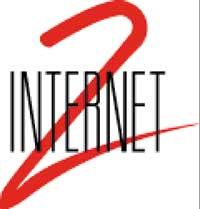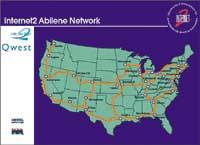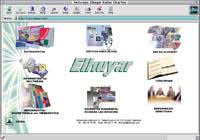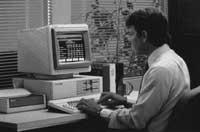The Internet of the Future?
1998/05/01 Waliño, Josu - Elhuyar Fundazioa Iturria: Elhuyar aldizkaria

The numbers have the word: currently the number of people connected to the Web is huge and this number is expected to increase by 400%. What we already know as World Wide Web is also baptism as World Wide Wait, expression of the patience necessary to travel.
What we have known until recently as an information motorway, has already been a way of donkey information, and the lack of speed to face the new challenges that are coming little by little will be more and more evident. The network is loaded with more and more sounds, videos and photos, and who hasn't heard of video conferences, telework, etc. ? But its application in reality is not so easy due to the slow speed of the Internet. This is one of the reasons why we created Internet2.
Internet2 does not intend to replace the current Internet. This new network has been developed for academic and technological purposes with the collaboration of the major universities and companies in the world of telecommunications in the United States, with which its use will be limited.
To meet your goals, you will need real-time multimedia interconnection and broadband, accompanied by an important network infrastructure. Although this network does not replace the Internet, there is no doubt that the new technologies and applications that will be developed will also have a direct impact on the Internet, providing benefits to users and, of course, significantly accelerating the speed of the network.
This new network is expected to be 1,000 times faster than the current one, enough to transfer the Britannica encyclopedia in a second. It will use as a base what is known as vBNS (very high-speed Backbone Network Service). This base connects five US supercomputer centers and has been used for scientific applications. A data: the existing network base has a speed of 45 million bits/second and the Internet2 will have a speed of 2.5 billion bits/second.
Virtual Reality in the Network
The main objective of people working in this new network is to guide the possibilities of telecommunications towards academic and technological spaces. They are already working on a project called Tele-Immersion. This uses the technology of Virtual Reality, allowing to group the different users in a single virtual space. Thanks to this project, participants in a teleconference will be physically involved in the classroom with the rest of participants, creating a three-dimensional video conference.

This can have important academic and scientific applications: thus, two scientists located in two corners of the United States will be able to work with the same molecule as if they were together in the same room. Their different applications can be a great advance in the scientific, university and business world. By this way, virtual labs will not be science fiction in a soon.
The current Internet, theoretically, is also capable of doing so, but when millions of people are connected at the same time, in reality it is impossible to use advances like three-dimensional video conferencing. On the other hand, priority problems also occur: The Internet does not understand by priority and on the network an ordinary mail message and a video conference will always have the same priority level.
The email I've sent, even though it was delayed on the net for ten minutes to give way to a video conference, does not cause me any inconvenience, but the Internet has no tools to prioritize traffic. However, Internet2 does, and will also use tools like Quality-of-Service (QoS). It allows users to reserve a piece of band in advance for a certain period of time for special use. Therefore, one of the biggest innovations of Internet2 is the implementation of new protocol options that will improve the quality of the service.
Academic Fundamentals Academic Fundamentals
This new network is born in the university. UCAID (University Corporation for Advanced Internet Development) is an association that brings together nearly 120 US universities responsible for the creation and development of Internet2. Along with this, the most important companies in the IT and telecommunications industry, such as Digital, IBM, Sun and Cisco Systems, have given a special boost to the project by developing the applications and technologies necessary for it.

In addition, three of these companies have allocated 500 million dollars to collaborate in the financing of the project. In addition, last year Bill Clinton promoted the NGI (Next Generation Internet) program, taking Internet2 as a pillar of the project and channeling $30 million a year for it. At the hands of the government institutions such as the Space Agency or the Department of Defense are working on this project, but the universities have total freedom for their development.
The Internet2 project is expected to develop in the next five years. In the first phase of this project, the network will be implemented among the participating universities and it is expected that at the end of this year several universities will be connected through this network. At the same time, technicians from companies and universities will work on the design of applications that can be used in this new network. It is expected that in 18 months the “beta” versions of a large number of applications will be available specifically for Internet 2.
UCAID President Douglas Van Houweling believes that the development of the Internet in the next 10 years will create a new form of communication among people. He says that “Internet will be the system we will use to watch TV, talk by phone or channel our businesses.
We’re not going to think more about something called the Internet, we’re going to live live.” New times come and we have to be prepared.
More information More information http://www.internet2.edu http://www.ucaid.edu http://www.ngi.gov http://whatis.com/internet2.htm http://vbns.net |

Gai honi buruzko eduki gehiago
Elhuyarrek garatutako teknologia





